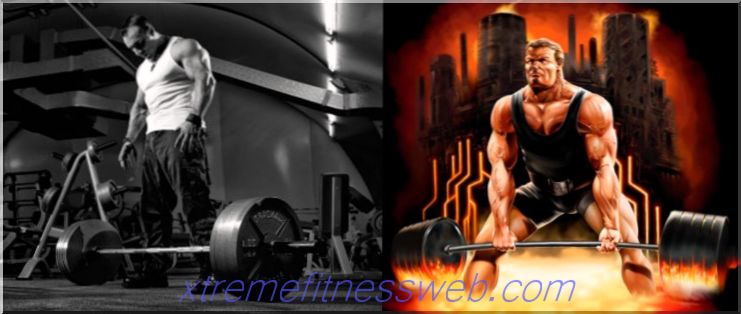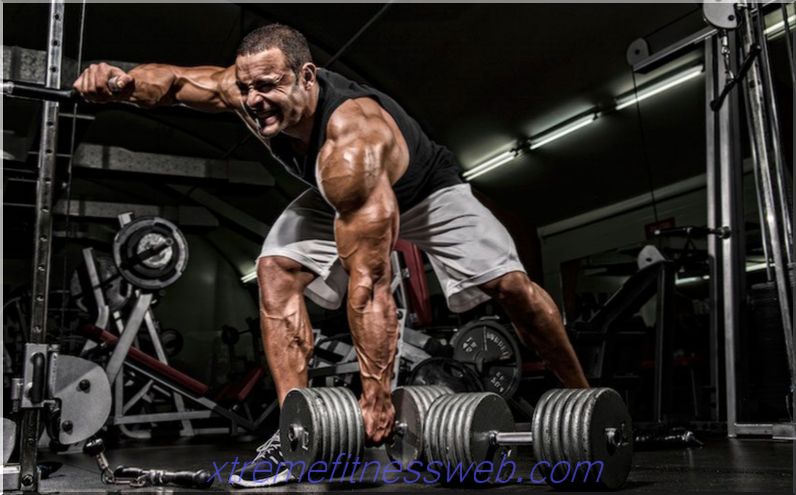
The pull of the upper block behind the head allows you to improve your posture, open your shoulders, learn how to “collect” your back in such strength exercises as squatting and bench press. The movement belongs to the classic legacy of bodybuilding. But recently, fitness trainers began to massively criticize the exercise, claiming that it is too traumatic for the shoulder joints. There is some truth in this, if a person does not have the opportunity to have straight arms behind his head due to pectoral hypertonicity and trapezoid, perhaps he should first learn how to pull to the chest, while simultaneously developing the mobility of the shoulder joints, and stretching the pectoral muscles. One way or another, the movement will help people with significant weight to get all the bonuses from the usual pull-ups, without disrupting the shoulder joint.
Content
- 1 muscle work
- 2 Preparation
- 3 Technique
- 4 Technical errors
- 5 Useful Tips
Muscle work

The main mover and goal of the exercise is the latissimus dorsi. The biceps, brachialis and brachioradialis help them in movement. The widest should take over the bulk of the work. Trapezius and round muscles also help in movement. The muscles of the body, pectoral, and thigh muscles work as stabilizers.
The movement is multi-articular, basic. It is aimed at the development of the back, and the broadest are quite strong muscles, and in order to load them qualitatively, significant weights must be taken. But the joints work in an anatomically limiting position. Therefore, large weights in this movement are not recommended. Choose moderate weights and use this movement as an extra.
Traction can be used as a rehabilitation exercise for spinal injuries, but several conditions must be met:
- Weights should be comfortable; increase should be gradual;
- Mobility of the shoulder joints - good;
- If pain and discomfort occur, the exercise should be replaced with a more comfortable one until the discomfort disappears completely.
Training

The test for admission to this variant of block traction is the institution of hands behind the head. Typically, a person is asked to stand up, grab a gymnastic stick with his grip a little wider than the shoulders, and lower it onto the top of the trapezius muscle by flexion in the elbow joints, and then smoothly lift it back up.
Approaches, repetitions, weight weights are individual parameters. The principle is that the number of repetitions should be less, in the range of 8-12, if a person wants to gain weight, and a little more, up to 15, if work is done for rehabilitation purposes.
Warm up is usually practiced if this exercise is the first in the plan to improve posture, and allows you to work out the correct position of the body. For those who do head pulls after performing a pull with a wide grip, chest, and waist pulls, a warm-up is optional.
Execution technique

Mandatory is the adoption of the right starting position. To do this, you need to adjust the height of the cushion-clamps of the simulator. The hips should pass freely under them in a position in which the hips are perpendicular to the legs. This allows you to maintain a stable position of the body, remove inertia, and thereby reduce the load on the ligamentous apparatus.
Having adjusted the height of the clamps, you need to stand directly facing the simulator, and grasp the handle with a comfortable wide grip. This will fix the body while sitting, and comfortably lower the handle behind the head. The width is selected individually, so that there is no pain in the shoulders, and it was possible maximum lowering of the handle behind the head. For most people, this is a grip width 5-10 cm wider than the shoulders, But there may be options for wider fixation of the palms. Hands should lie on the surface of the simulator handle at the same distance from the imaginary center, providing symmetry.
Then you need to sit on the simulator bench, at the same time moving your hands behind your head, and lowering the shoulder blades to the spine. The back will assume a slightly arched position. It is necessary to lower directly, symmetrically fixing the legs. Then gently pull the handle to the top of the trapezoid, leading the elbows along the body along the arcuate trajectory, and carefully collecting the “halves” of the back to each other, controlling the latissimus muscles. At the lower point, you can statically contract the muscles, and gently reduce the shoulder blades so that you feel the widest even stronger. Then you need to take your hands to the starting position.
This exercise is aimed at developing the muscles of the back, and not the biceps, so you need to be careful about the technique. If only the biceps get tired of the movement and not the back, a technical error is made. It is necessary to pay attention to the muscles of the back consciously, and not start by bending the elbows. The first movement should be the scapula of the shoulder blades to the spine and their lowering as if down, then the vulture will turn on earlier than the biceps and will take on most of the load.
Technical errors

Typical errors are associated with overloading the trapezoid, improper posture, or traction due to bending of the arms in the elbow joints.
When performing head pulls, avoid:
- Rounding shoulders forward. If such a posture is associated with an overload of the chest muscles, you must first stretch them slightly and gently roll a foam roller;
- Start due to flexion of the elbows, tension of the biceps. This allows you to redistribute the load on the hands, and not on the back;
- Asymmetrical grip, which does not allow to equally load both halves of the back;
- Incorrect position of the legs, causing the buttocks to tear off the bench with each movement;
- Lack of fixation of the legs;
- Jerky movement, due to the push of the case forward, and inertia
Useful Tips

Some technical subtleties will help you better feel your back muscles and work it out in this exercise as efficiently as possible:
- The back should be kept straight, muscles should be kept in good shape so as not to overload the shoulder girdle with extra abductions of the shoulders during movement;
- When lowering the handle, the body can be slightly advanced forward, removing the head from the trajectory;
- The body should be tense, but not pinched, it is better to remove the shoulders from the ears immediately;
- To fix the hands on the handle, you can use the straps as for deadlifts or block traction, so that discomfort in the forearms does not interfere with the exercise
Technically correct performance of head traction is safe, so at first you do not have to chase the scales, but you need to ensure a stable position, learn how to perform the movement stably and correctly, and regularly include it in the training process.







